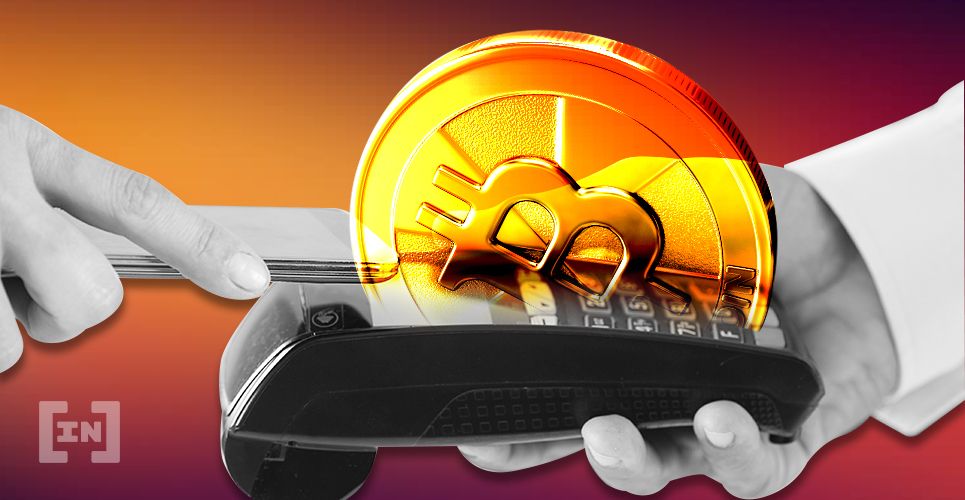International payments using cryptocurrencies in a simple transaction is what every business hopes for. But we aren’t there yet. Alexander Mamasidikov, co-founder of mobile digital bank MinePlex, says that companies offering cryptocurrency payment solutions must find ways help their clients make global transactions more easily.
Cryptocurrencies have long been serving as alternative investments. They can be riskier (due to increased volatility) but yield greater potential returns than stocks, bonds, or other general market assets.
However, in addition to investments, crypto has another, even more, powerful use case. Let’s compare them to fiat currencies and conventional payment methods like bank accounts, checks, and credit cards. Here, digital assets possess unique features that make them attractive in the eyes of both consumers and businesses.
SponsoredInternational payments using cryptocurrencies: Highly wanted
A recent report by Crypto.com and Worldpay revealed some interesting things. 75% of Crypto.com’s customers expressed their interest in using digital assets to purchase goods and services. Only 4% of the surveyed merchants accept cryptocurrency. But a further 56% considered rolling out crypto as a payment method for their solutions within one year.
What is the reason behind this surge in demand? Is there a case for cryptocurrency becoming a mainstream payment method for international transactions?
Fiat transfers are expensive and take too long to process
Before we dive really deep into our topic, let’s first see how fiat payments work. Then we can see the true potential of crypto transactions.
As you may already know, fiat currencies are issued, managed, and controlled by the state via central banks. Banks are strictly regulated all over the world. They have to ensure that the money you spend through their service is going through a trustworthy provider. For that reason, they establish financial relationships with other institutions and payment companies. These act as intermediaries in a transaction.
As a result, the transfer doesn’t go through directly between the sender and the recipient. Instead, it goes through several intermediaries. This increases the cost of the transaction (which can be as high as $49) and the time required to process it.
Sponsored SponsoredDue to the middlemen involved, merchants often have to wait days (or sometimes weeks) for their customers’ transactions to clear. This is along with covering processing fees ranging between 1.5% and 3.5% (plus additional costs like card assessment and interchange).
Not to mention the fact that, when dealing with banks, you run the risk of having your account be blocked out of nowhere, losing access to your money. Banks are allowed to freeze accounts if they suspect illegal activity. And since they can’t risk tipping off the criminals, they aren’t always able to give advance warnings or explain their reasons for doing so. This often leads to alarm among bank customers, as they are left unable to make transfers or withdraw their funds.
The Case for crypto as a primary payment method for international transfers
Unlike fiat currencies, crypto resides on the blockchain, an underlying distributed ledger that serves as the backbone for settling transfers.
This network is managed by the community instead of a company or another centralized authority. It can be used to facilitate all kinds of transactions between users. Examples of such range from something as simple as user-to-user money transfers to complex digital agreements called smart contracts. Smart contracts are utilized to autonomously operate decentralized applications (dApps) like exchanges, wallets, lending platforms, and non-fungible token (NFT) marketplaces.
One of the most important features of cryptocurrency transactions is that they don’t involve any intermediaries. Instead, they are settled directly between the sender and the recipient. Due to this lack of intermediaries and the fact that blockchain networks operate continuously, crypto transactions are much cheaper than fiat payments and take only a few minutes to process.
SponsoredThese features are why an increasing number of consumers and merchants choose to adopt crypto for money transfers.

Crypto payments need to be simple and convenient to attract a mainstream audience
The advantages of cryptocurrencies make them viable alternatives to fiat for consumers to use. They can pay their bills, purchase products and services from merchants, and settle everyday payments.
However, despite the rapid growth in demand among consumers and businesses, industry players must develop and implement standardized ways and procedures for transferring digital assets.
Sponsored SponsoredThe reason why this is needed is rather straightforward. In its original form, crypto is much too complex for the average person to use casually. In addition to creating a wallet and storing your private keys in a secure way, you have to fund your account with fiat currency. Which you have to convert into cryptocurrency before you can even initiate the transaction.
Global cryptocurrency payments and complexity
This process is not just lengthy but has a steep learning curve for beginners. This discourages the majority of consumers and merchants. The average non-tech-savvy person doesn’t want to understand the intricacies of the technology behind cryptocurrencies. They don’t seek to handle the custody of their assets or learn the best practices of securing their wallets. They simply want to use them for payments as conveniently as possible.
For that reason, developing a viable infrastructure and implementing industry standards for digital asset transactions empowers people with the ability to settle their everyday payments in one click. They need the same convenience as they are used to in the fiat world.
When this happens, crypto could play a pivotal role in the future of international financial transactions. In that case, complete infrastructural development and mainstream usage will potentially lead to a significant shift in the geopolitical landscape and worldwide adoption of digital assets for payments. Central bank digital currencies serve as a great example here.
But to achieve that, companies offering cryptocurrency payment solutions must find ways to provide their clients with a comprehensive list of easy-to-use financial instruments for transactions.
Got something to say about international payments or anything else? Write to us or join the discussion in our Telegram channel.

